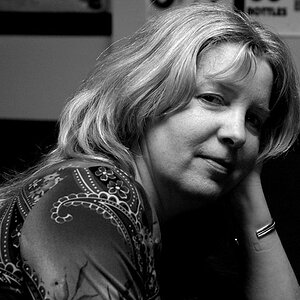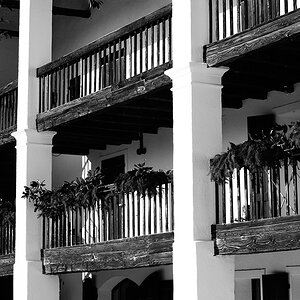Hi I am new could you answer me a question Please If i buy a lens for example 24-70mm F3.5-5.6 what does the f mean?? Does it mean i can i only use the lenses between f3.5-5.6, or can i use them at differnet apertures Please Help i am confused Many thanks
Navigation
Install the app
How to install the app on iOS
Follow along with the video below to see how to install our site as a web app on your home screen.

Note: This feature currently requires accessing the site using the built-in Safari browser.
More options
You are using an out of date browser. It may not display this or other websites correctly.
You should upgrade or use an alternative browser.
You should upgrade or use an alternative browser.
lenses please explain i am confused
- Thread starter miskin83
- Start date
doenoe
TPF Noob!
- Joined
- Mar 4, 2005
- Messages
- 4,267
- Reaction score
- 23
- Location
- Hoorn, The Netherlands
- Website
- www.daanschouwe.nl
- Can others edit my Photos
- Photos NOT OK to edit
if i got this correct, it means this: if you got the lens on 24mm, the smallest F-number you can use is 3.5. If the lens is set to 70mm, the smallest f-number will be 5.6.
Something like that anyways, but im sure there will be someone more knowledgable then me to come and make it for sure.
Something like that anyways, but im sure there will be someone more knowledgable then me to come and make it for sure.
'Daniel'
TPF Noob!
Yes that's what it means. If yuo set to the largest aperture at 24 mm it will be 3.5; if you then zoom in to 70mm then the aperture will close to 5.6.
Hertz van Rental
We're supposed to post photos?
When you zoom the aperture does not change in size, it's just the f-number that changes.
This is because the f-number is given by the focal length of the lens divided by the aperture diameter.
For example:
Aperture diameter = 10mm
At a focal length of 80mm = 80/10 = f8
At a focal length of 40mm = 40/10 = f4
What actually happens is that the light intensity reaching the film/sensor changes due to the Inverse Square Law so the change in f-number compensates for this.
This is because the f-number is given by the focal length of the lens divided by the aperture diameter.
For example:
Aperture diameter = 10mm
At a focal length of 80mm = 80/10 = f8
At a focal length of 40mm = 40/10 = f4
What actually happens is that the light intensity reaching the film/sensor changes due to the Inverse Square Law so the change in f-number compensates for this.
amoki
TPF Noob!
The F-number refers to an aperture, and the number on a lense typically means the maximum aperture the lense can have (in this case, the "biggest" hole your lense can have) for reasons beyond me, but it probably has something to do with the lense's construction. That's why people are willing to pay good money for lense with the widest aperture. E.g, the famous Canon "L"-series lense with its constant F2.8 aperture... 
In this case, the widest "hole" you can get at 24mm focal length from the lense that you'd mentioned is F3.5. . At maximum zoom (70mm), its F-5.6. Not too bad, but certainly not the kind of lense you would want to stay with if you're a proffesional photographer
Having said that, you can always stop down from the widest aperture of a lense to the smallest aperture (F22?) at any given focal length unless your camera is a point-and-shoot. Digital p-o-s will have vastly limited aperture, I believe.
All F number are the same on all cameras. The F number if a standardized unit.
If there is any terminology you do not understand stroll to the uppermost thread in this part of the forum. After all, we're all about helping. Amen? :lmao:
Hertz - what you're saying is useful, but I think it's way too advance for him. Let him learn step by step before bringing in the big guns
In this case, the widest "hole" you can get at 24mm focal length from the lense that you'd mentioned is F3.5. . At maximum zoom (70mm), its F-5.6. Not too bad, but certainly not the kind of lense you would want to stay with if you're a proffesional photographer
Having said that, you can always stop down from the widest aperture of a lense to the smallest aperture (F22?) at any given focal length unless your camera is a point-and-shoot. Digital p-o-s will have vastly limited aperture, I believe.
All F number are the same on all cameras. The F number if a standardized unit.
If there is any terminology you do not understand stroll to the uppermost thread in this part of the forum. After all, we're all about helping. Amen? :lmao:
Hertz - what you're saying is useful, but I think it's way too advance for him. Let him learn step by step before bringing in the big guns
Hertz van Rental
We're supposed to post photos?
I actually thought that what I said answered his question simply and succinctly, but what do I know?amoki said:Hertz - what you're saying is useful, but I think it's way too advance for him. Let him learn step by step before bringing in the big guns
Hertz van Rental
We're supposed to post photos?
Inverse Square Law
Light intensity is inversely proportional to the distance from the source.
Basically saying that the further you move away from the light the darker things get. But there is a set ratio so you can work it out.
Think of Geometry.
Think of a pyramid.
If you have a pyramid (or cone) of a set height the base has a certain base area.
If you double the height of the pyramid the base area increases by a factor of 4.
So too with light.
If you have a light at a known distance from a surface it gives a certain level of illumination.
Move the light twice (2x) the distance away and the illumination level on the surface decreases by a factor of 4 (2 stops).
It's fundamental to virtually all aspects of Photography - but a very simple principle.
Light intensity is inversely proportional to the distance from the source.
Basically saying that the further you move away from the light the darker things get. But there is a set ratio so you can work it out.
Think of Geometry.
Think of a pyramid.
If you have a pyramid (or cone) of a set height the base has a certain base area.
If you double the height of the pyramid the base area increases by a factor of 4.
So too with light.
If you have a light at a known distance from a surface it gives a certain level of illumination.
Move the light twice (2x) the distance away and the illumination level on the surface decreases by a factor of 4 (2 stops).
It's fundamental to virtually all aspects of Photography - but a very simple principle.
PlasticSpanner
TPF Noob!
- Joined
- May 1, 2005
- Messages
- 4,125
- Reaction score
- 51
- Location
- Cheshire, England
- Website
- www.cheshirecatcarclub.info
- Can others edit my Photos
- Photos NOT OK to edit
A pyramid is the best way of explaining ISL I've ever seen! :thumbup:
Hertz van Rental
We're supposed to post photos?
That's because it's the same Geometric law that governs both, if you think about it.
Most people miss it.
Some of the strange stuff you learnt in Maths in school does have a use...
Most people miss it.
Some of the strange stuff you learnt in Maths in school does have a use...
- Joined
- Feb 1, 2004
- Messages
- 34,813
- Reaction score
- 822
- Location
- Lower Saxony, Germany
- Can others edit my Photos
- Photos NOT OK to edit
Hey. Shhh.
Silly question: what does the letter "f" stand for in "f-stop" then? (I know all the rest, but in German it is called "Blende" and... well... this question is for my English knowledge rather than anything else).
Silly question: what does the letter "f" stand for in "f-stop" then? (I know all the rest, but in German it is called "Blende" and... well... this question is for my English knowledge rather than anything else).
Azuth
TPF Noob!
I've seen it written that the f literally stands for fraction. Which kind of makes sense, but is never how I think of it, I always just think of it by its definition.
Focal Ratio is what it was meant to mean at first. First, it was referred to as f-number but f-stop came around when standard ratios became "stops" instead of a graduated number.
That's the way I remember it anyway. :hertz: would know better.
:hertz: would know better.
That's the way I remember it anyway.
Unimaxium
TPF Noob!
- Joined
- Nov 13, 2004
- Messages
- 2,689
- Reaction score
- 22
- Website
- www.flickr.com
- Can others edit my Photos
- Photos OK to edit
I always think of it as being written as f/number, as in f/8, or the focal length divided by 8, which gives you the aperture diameter. So in this case the "f" refers to the focal length. But that's just what I guessed it to mean.
Similar threads
- Replies
- 0
- Views
- 178
- Replies
- 0
- Views
- 329








![[No title]](/data/xfmg/thumbnail/35/35969-b6f009f356cac5fdbffb0729bddb9e25.jpg?1619737288)

![[No title]](/data/xfmg/thumbnail/35/35967-ee5e7220e6f5cbd7d70fb99fe8ce5038.jpg?1619737285)

